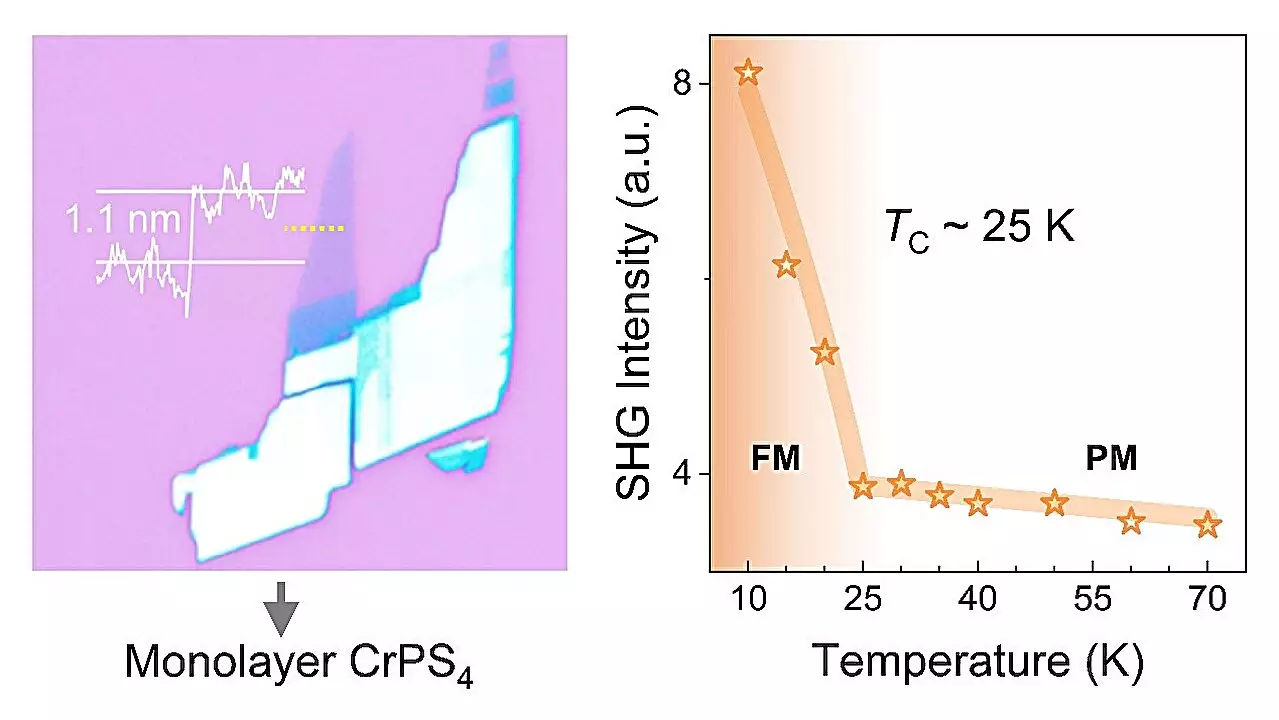In a groundbreaking research study conducted by Professor Sheng Zhigao and his team at the Hefei Institutes of Physical Science of the Chinese Academy of Sciences, a new era in the field of nonlinear optics has been unveiled. The team observed a strong nonlinear magnetic second harmonic generation (MSHG) induced by the ferromagnetic order in monolayer CrPS4, marking a significant milestone in the realm of optical materials science.
Traditionally, second harmonic generation (SHG) has been studied in crystals with broken symmetry (i type), where the effect is well-known and established. However, the occurrence of SHG in magnetic systems (c type) has remained relatively unexplored due to its weaker nature. This limitation has hindered the potential applications of magnetic materials in optoelectronics, prompting researchers to delve into new avenues of exploration.
Two-dimensional van der Waals materials have garnered attention in recent years for their unique properties and potential applications in various fields. However, their nonlinear optical properties, particularly the connection between SHG and magnetic order, have not been thoroughly investigated until now. The study conducted by Sheng’s team sheds light on the unexplored territory of 2D antiferromagnetic materials and their intriguing nonlinear optical effects.
The research team’s observations in monolayer CrPS4 revealed a remarkable phenomenon – the ferromagnetic order induced c type SHG effects, defying conventional expectations. Unlike bulk and even-layered CrPS4, odd-layered CrPS4 exhibited a substantial c type SHG effect triggered by the presence of ferromagnetic order. This unprecedented discovery highlights the dual breaking of spatial and time inversion symmetries, leading to a signal strength comparable to that of i type SHG. Such a revelation is a rarity in the realm of magnetic materials and opens up new possibilities for future research and technological advancements.
Professor Sheng Zhigao’s research team has made a significant stride in the understanding of nonlinear magnetic second harmonic generation in 2D materials. Their findings not only expand our knowledge of optical properties in magnetic systems but also pave the way for innovative applications in optoelectronics and beyond. As the scientific community continues to unravel the mysteries of nonlinear optics, this study serves as a beacon of progress and curiosity-driven exploration in the ever-evolving field of materials science.


Leave a Reply